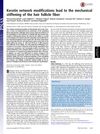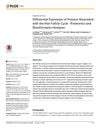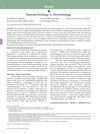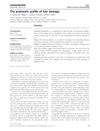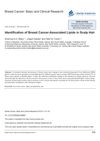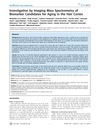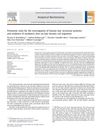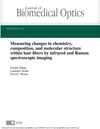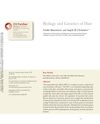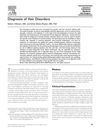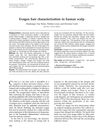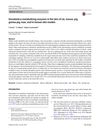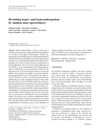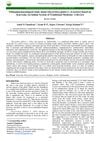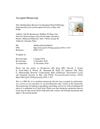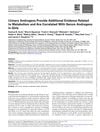Human Hair as a Testing Substrate in the Era of Precision Medicine: Potential Role of Omics-Based Approaches
December 2018
in “
IntechOpen eBooks
”
hair testing biomarkers hair cortisol levels ethyl glucuronide proteomics lipidomics metabolomics oxidative damage autoimmune diseases cancer risks data repositories bioinformatics integrative multi-omics molecular imaging nanotechnology Fourier transform infrared imaging FTIR stress biomarker alcohol abuse detection multi-omics FTIR imaging
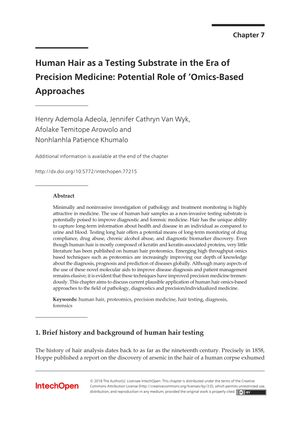
TLDR Human hair shows promise for non-invasive medical testing, but more research is needed to standardize its use.
The document from 2018 explores the use of human hair as a non-invasive substrate for testing in precision medicine, emphasizing its ability to reflect long-term health and disease information. Hair testing has applications in monitoring drug compliance, detecting chronic alcohol abuse, and discovering biomarkers. The document reviews hair's biochemical structure and its historical and current medical applications, including monitoring HIV/AIDS and tuberculosis treatments. It also discusses the use of hair cortisol levels as a stress biomarker, the detection of ethyl glucuronide for alcohol abuse, and the correlation between hair chromium levels and diabetes. Omics-based approaches, such as proteomics, lipidomics, and metabolomics, have identified biomarkers for conditions like oxidative damage, autoimmune diseases, and cancer risks. The document highlights the importance of data repositories, bioinformatics, and integrative multi-omics methods for molecular analysis, as well as molecular imaging techniques for hair characterization. It also mentions the potential of nanotechnology and Fourier transform infrared (FTIR) imaging in hair analysis. The conclusion suggests that while hair testing holds promise for precision medicine, routine use in diagnostic pathology faces challenges, and more work is needed to establish a standard workflow.
